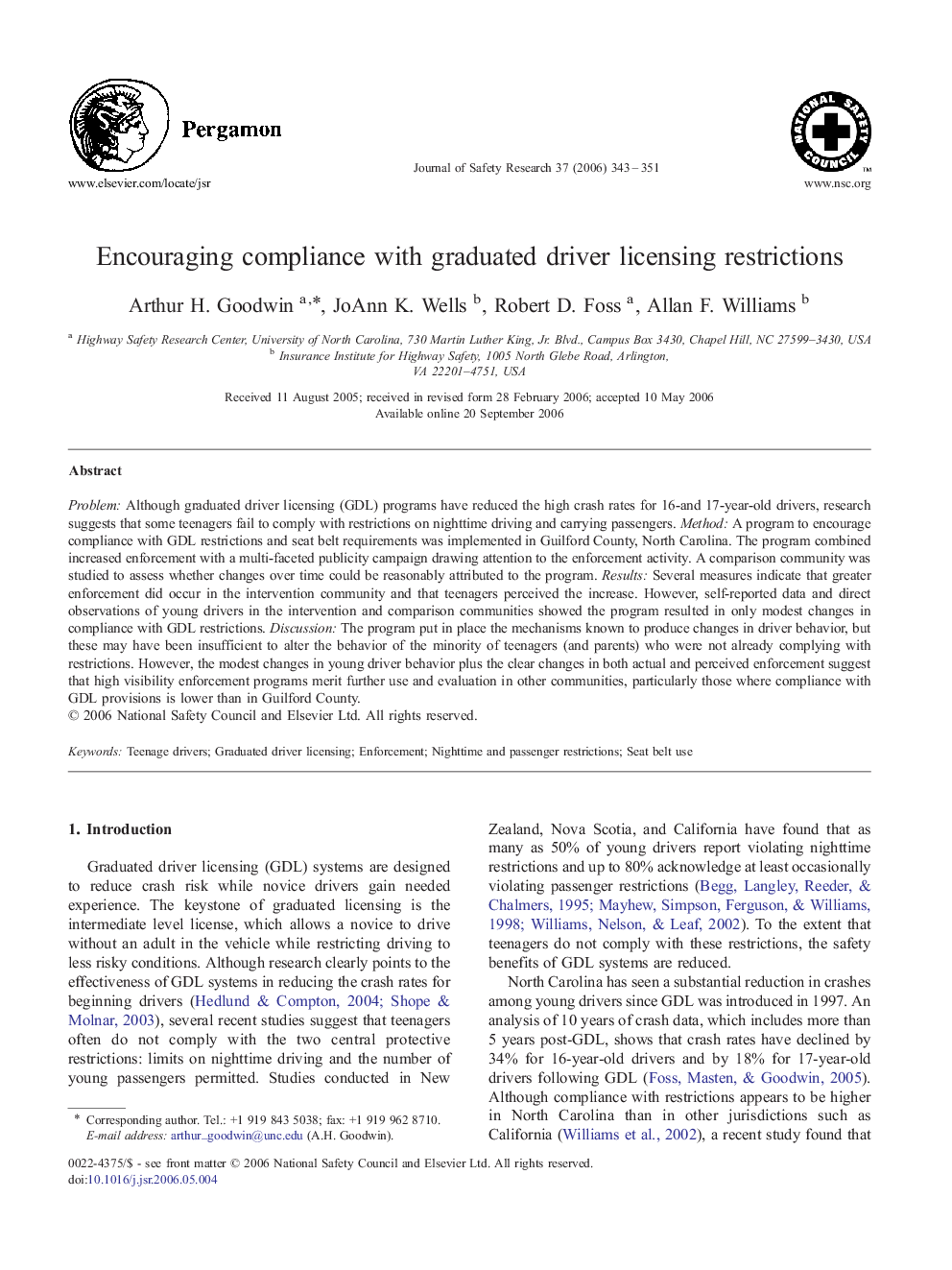| Article ID | Journal | Published Year | Pages | File Type |
|---|---|---|---|---|
| 588028 | Journal of Safety Research | 2006 | 9 Pages |
ProblemAlthough graduated driver licensing (GDL) programs have reduced the high crash rates for 16-and 17-year-old drivers, research suggests that some teenagers fail to comply with restrictions on nighttime driving and carrying passengers.MethodA program to encourage compliance with GDL restrictions and seat belt requirements was implemented in Guilford County, North Carolina. The program combined increased enforcement with a multi-faceted publicity campaign drawing attention to the enforcement activity. A comparison community was studied to assess whether changes over time could be reasonably attributed to the program.ResultsSeveral measures indicate that greater enforcement did occur in the intervention community and that teenagers perceived the increase. However, self-reported data and direct observations of young drivers in the intervention and comparison communities showed the program resulted in only modest changes in compliance with GDL restrictions.DiscussionThe program put in place the mechanisms known to produce changes in driver behavior, but these may have been insufficient to alter the behavior of the minority of teenagers (and parents) who were not already complying with restrictions. However, the modest changes in young driver behavior plus the clear changes in both actual and perceived enforcement suggest that high visibility enforcement programs merit further use and evaluation in other communities, particularly those where compliance with GDL provisions is lower than in Guilford County.
